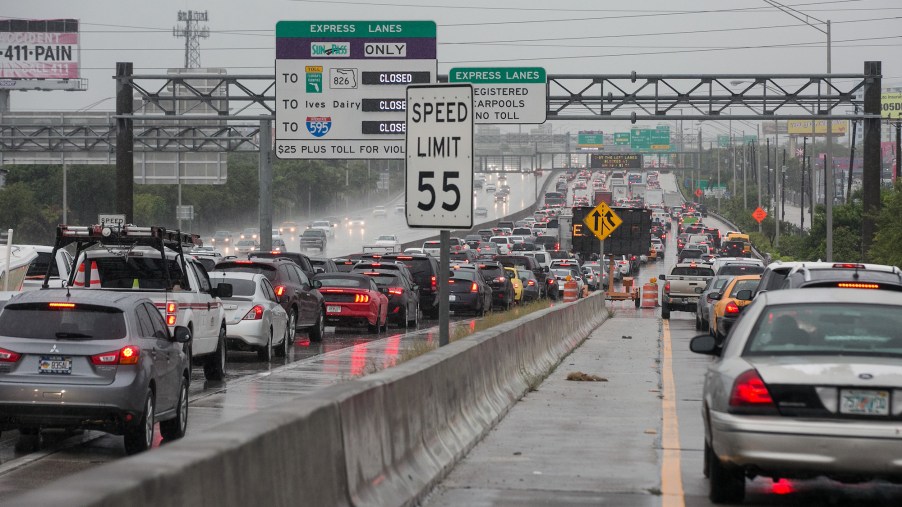
News Flash: Florida Drivers Can Finally Use Hazard Lights in the Rain Legally
Automakers are constantly upgrading car safety systems to keep drivers secure. But one simple safety feature is hazard lights. They alert drivers to a disabled vehicle or other potential hazards. And in some states, motorists use hazard lights during heavy rainfall so that others can better see them.
Although flashers can help prevent car accidents, some states don’t allow them in inclement weather. Florida was one until recently. In fact, the Sunshine State will soon allow drivers to use hazard lights in the rain despite some lawmakers’ protests.
Is using hazard lights when driving in the rain dangerous?
Several years ago, the Miami Herald published an article advising Florida drivers to stop using their hazard lights in the rain.
The newspaper quoted AAA as saying hazard lights should be used only “when you have pulled over to the side of the road or are disabled or in an accident.” It added, “You cannot use them when you’re moving. It only causes confusion. Other drivers have no idea what you’re doing.”
A Florida Highway Patrol officer said, “If your lights are indicating some kind of emergency, the drivers following you don’t know whether to slam on the brakes or swerve around you. You may think you’re being cautious, but you’ve misinterpreted the purpose of hazard lights.”
When can Florida drivers begin using their hazard lights in the rain?
According to WSVN, in 2015, the Florida Department of Highway Safety and Motor Vehicles warned drivers, “If driving in the rain is too dangerous, pull off the road. DO NOT activate hazard lights while still traveling.”
Despite prior guidance, state legislators recently amended the transportation bill. And as of July 1, Florida motorists will be allowed to use their flashers while driving in the rain.
According to the Orlando Sentinel, this new law applies only “on roads with speed limits at or above 55 mph when the conditions create ‘extremely low visibility.'”
Florida Sen. Ed Hooper is responsible for this sudden law change. A retired firefighter, he said, “There’s been many times you’re driving, and you’ve got the death grip on the wheel, you’re doing 30 mph on the highway, and you can’t see anything in front or behind you, and you’re not really sure where you can pull over.”
Rep. Matt Willhite opposed the change, saying, “It just seems silly that we’re legitimizing or legalizing what’s against the law currently just because people get nervous driving.” He added, “Maybe we shouldn’t call them ‘hazard lights.’ We can rename them ‘I’m a scared driver; I don’t want to follow the law.'”
Since July 1, 2018, 460 citations have been issued to Florida drivers for improper use of flashing lights.
Other states that allow their use
When it comes to traffic laws, every state is different. Each department of motor vehicles oversees the driving rules and regulations.
In states like Louisiana, using hazard lights when driving in the rain is against the law. Instead, the state recommends using flashers only when a vehicle is on the shoulder or disabled on a roadway.
According to AAA, only 10 states prohibit the use of hazard lights when driving in the rain.
States that permit the use of flashers while driving include Alabama, Connecticut, Georgia, Kentucky, Michigan, Mississippi, Missouri, Nebraska, New Hampshire, New Jersey, New York, North Carolina, North Dakota, Oregon, Pennsylvania, South Dakota, Texas, Utah, Vermont, and Wyoming.
The remaining states have exceptions to the rules, allowing hazard lights only in certain circumstances.


